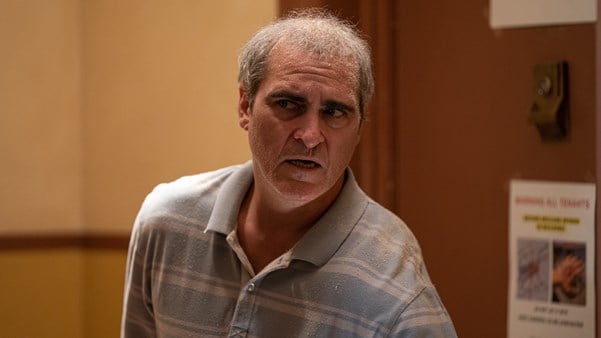From a bloodthirsty tyre to a domineering jacket, mundane items have a habit of turning to murder in the films of the experimental writer-director. His latest, Smoking Causes Coughing, is no exception.

Bizarro premises, deliberate disorientation, madcap ideas. These are the hallmarks of provocateur Quentin Dupieux, whose absurdist cinema – featuring disembodied mouths sloshing around in buckets and houseflies the size of dogs coached to rob banks – has earned him cult renown. With a wink and a smile, the filmmaker delights in taking something familiar and making it unfamiliar to expose the artifice that underpins accepted storytelling tropes.
At their core, though, his movies ascribe to the nihilistic artistic manifesto set out in the opening minutes of Rubber (2010), his metatextual pseudo-Western about a head-exploding tyre: ‘All great films, without exception, contain an important element of no reason, because life itself is filled with no reason.’ Bearing that in mind, it might seem like a fool’s errand to try to derive greater meaning from Dupieux’s curious, wilfully opaque work. But look a little closer and patterns start to emerge. His films favour washed-out, largely brown aesthetics; their scenes often unspool in the transient spaces of cars and hotels; and, in the case of Rubber, Deerskin (2019) and Smoking Causes Coughing (2022), they spotlight killer objects.
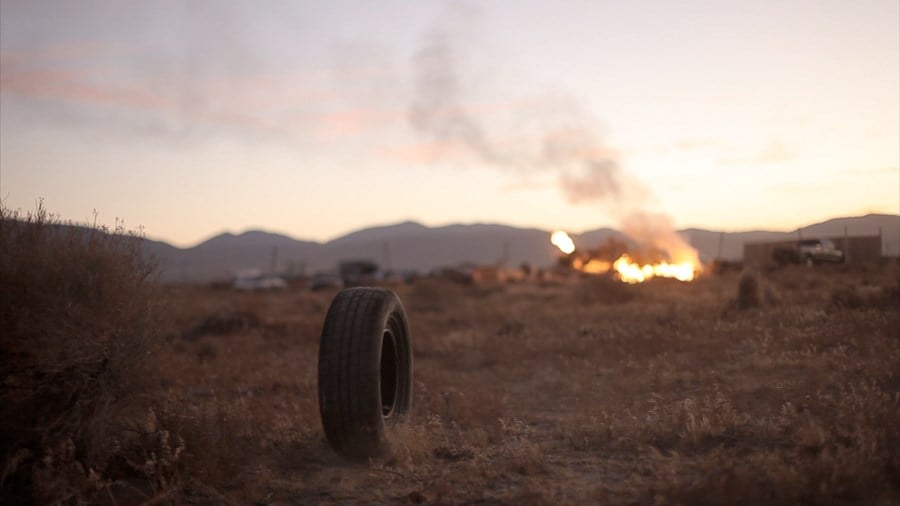
Rubber (2010)
Excluding Deerskin – a black comedy centred around a grizzled, newly single Jean Dujardin who becomes enthralled with a murderous jacket intent on world domination – there aren’t really characters in these movies. Dupieux’s dialogue is purposefully stilted, and the people who populate his wacky worlds are thinly outlined types that are afforded little development beyond their narrative function. Rubber, for instance, employs a Greek chorus of interchangeable, mostly anonymous players who are purely there to comment on the tyre’s homicidal rampage. Similarly, the oddball anti-superhero riff Smoking Causes Coughing, in which an Avengers-adjacent assembly known as the Tobacco Force are sent on a team-building trip by their boss (a long-snouted, gunge-dripping rat puppet), limits each member’s character to a couple of broad traits, and names them after the noxious chemicals found in a cigarette. In this absence of recognisable humanity, anthropomorphised objects are well placed to fill in the gap with their malevolent personalities.

Smoking Causes Coughing (2022)
Despite its Western trappings – American frontier location, Mexican standoffs, John Ford-style shot composition – Rubber is ultimately a coming-of-age film for a tyre that charts its passage through key life stages. From the moment it shudders awake, in a barren wasteland dotted with rusted cans and scorched grass, the tyre (referred to as Robert in the credits) expresses itself through movement. At first, it is hesitant, its attempts to roll across the sand falter and it repeatedly topples over. The clumsiness of this action depicts the tyre as a sort of newborn taking its metaphorical first steps. Minutes later, it evolves an explorative, toddler-like sense of play, testing its ability to crush plastic bottles and scorpions under its weight before honing its kill method of choice, blowing things up via psychokinetics, and targeting bigger and bigger prey (insects follow birds, which follow humans).
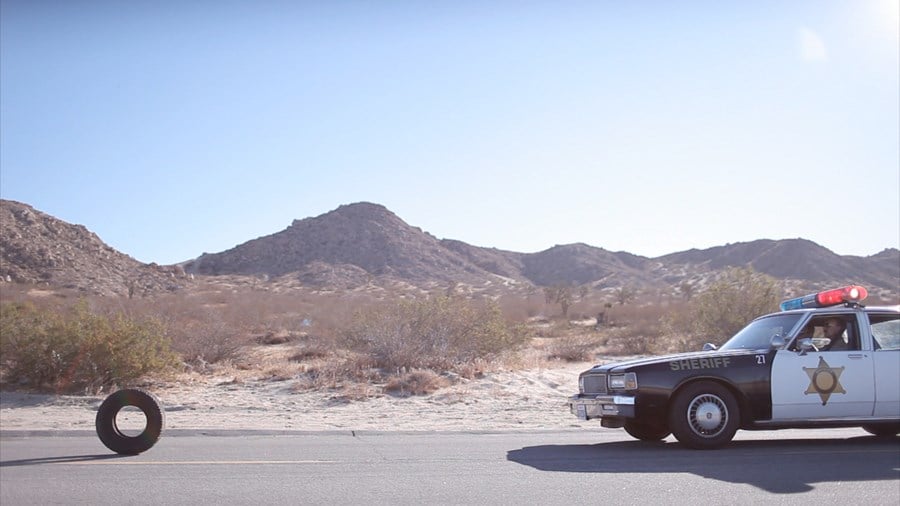
Rubber (2010)
Naturally, puberty comes next. The way it sheepishly nudges a motel-room door open to leer at a naked woman showering implies a sexual awakening, as does the tyre’s rapt viewing of a troupe of hula dancers on television. As any child psychologist will tell you, self-concept (i.e. having thoughts and feelings about oneself) is a crucial development marker, therefore the tyre’s contemplation of its reflection in a mirror towards the end of the film is a watershed moment. It prompts the tyre to consider its lifecycle – we flashback to it rolling along the sand, a number of its murders and even its original position as the front right tyre on a car – and cements its ability to recognise its own existence. Without giving the tyre a word of dialogue, Dupieux has managed to create a fully realised character, whose mischievous, quick-to-anger nature we soon come to recognise as it transitions from infancy to adolescence to adulthood. It’s an impressive feat.

Rubber (2010)
Although Deerskin is also named after the material of its killer object, the film’s presentation of its deadly fringed jacket significantly diverges from Rubber. Where the tyre acts alone, the jacket requires its human handler (Dujardin’s Georges) to sate its bloodlust. Deerskin arguably offers the filmmaker’s closest approximation of our real world, since almost everything shown is possible – if admittedly improbable. The jacket is initially framed as Georges’ ventriloquist doll. When ‘it’ speaks, usually crudely or threateningly, Dupieux makes sure that we can see Dujardin’s lips moving. This act is a way for Georges to disassociate from the bleakness of his current situation: homeless, penniless and vainly trying to communicate with an ex-wife who tells him he ‘no longer exists’.

Deerskin (2019)
Playing the good cop to the jacket’s bad cop creates a (false) camaraderie that helps him bury his loneliness, and also indicates that Georges is traversing some sort of psychotic break. The reason he likes the jacket in the first place is that it allows him to stand out now that he feels invisible, therefore his and the jacket’s shared mission to eliminate all other overcoats from the face of the Earth is a desperate cry for attention. If no one else owns an overcoat, Georges seems to reason, people will be forced to see him as special, and that’s all he wants. How he’s perceived is of the utmost importance, which explains why he lies to Adèle Haenel’s barmaid to look accomplished, and why he attacks a child who catches him at a low point eating out of a bin. In Deerskin, the jacket is an excuse for Georges to channel his own anger and hurt into physical violence. That the 77-minute film’s first kill doesn’t arrive until 53 minutes in demonstrates that Dupieux is more interested in excavating wounded masculinity through Dujardin’s pitiful protagonist than attributing psychological motivation to a jacket.
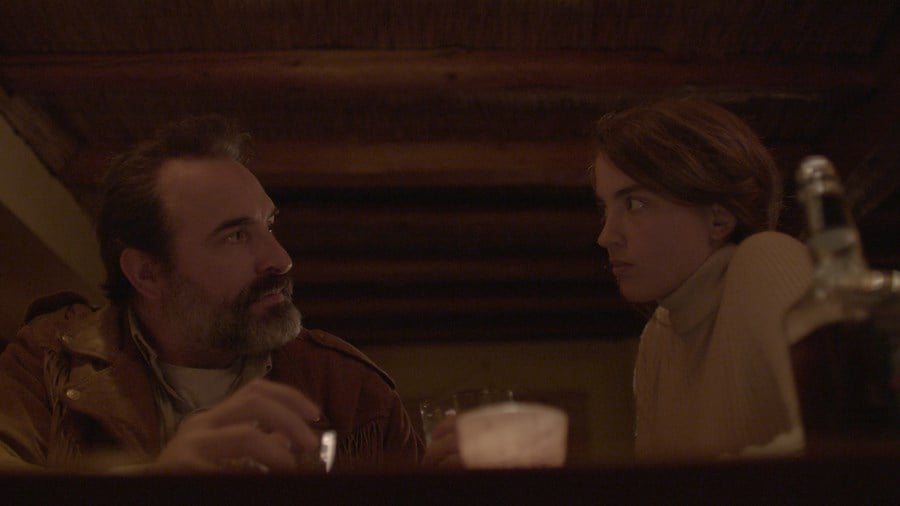
Deerskin (2019)
The killer object in Smoking Causes Coughing appears to be the most passive in the director’s oeuvre: it cannot propel itself (like Rubber’s tyre) and it doesn’t have a voice (like Deerskin’s jacket). In one of the several vignettes that make up Dupieux’s latest film, Doria Tillier’s Agathe puts on a helmet that ‘enhances thought flow and quickly purifies your mind’ when on a country-house holiday with her husband (Jérôme Niel) and their two friends. It may advertise itself as a self-care meditation tool, but the headwear has a pernicious effect on Agathe, souring her satisfied, happy-go-lucky self into a pensive, withdrawn onlooker removed from the group’s festivities.
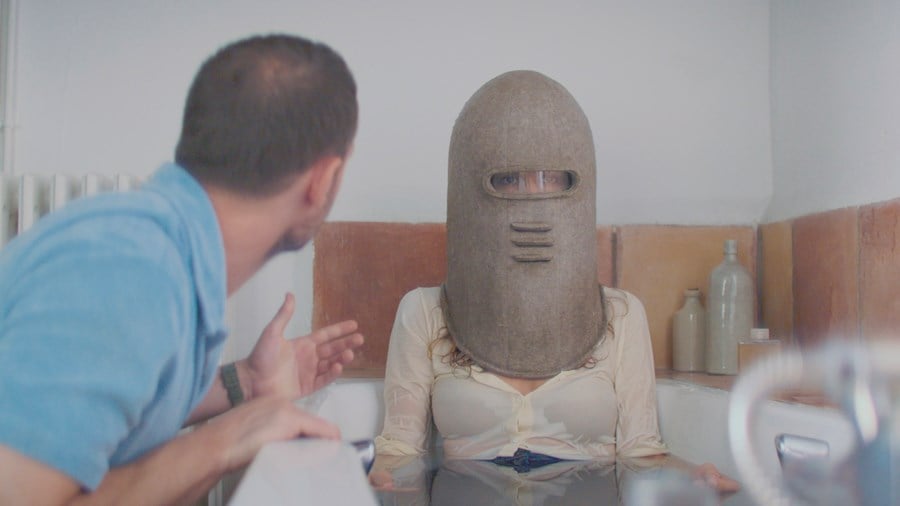
Smoking Causes Coughing (2022)
By influencing her to think deeply, the helmet has allowed her to realise her life’s shortcomings. In a calmly delivered voiceover, she calls one friend ‘a loser’, another ‘a dipshit’ and her husband ‘a dumbass’ who she ‘doesn’t remember loving for a single second’. These character assassinations rapidly become actual assassinations, and Agathe kills off her companions one by one (stabbing a friend in the eye seems to pointedly say he can’t see what’s really going on around him). As in Deerskin, the murders are executed dispassionately and the ‘no reason’ of Rubber gives way to social commentary. With the helmet, Dupieux criticises bourgeois arrogance, implying that if you think profoundly about what you’re supposed to want (i.e. marriage, like-minded friends and weekend getaways) it may come up short. He might claim that it amounts to nothing, but Quentin Dupieux’s cinema uses the farfetched to smuggle in big ideas about human relationships and emotions – even if it’s (in)animate objects that prompt such lines of thought.
WATCH SMOKING CAUSES COUGHING IN CINEMAS




